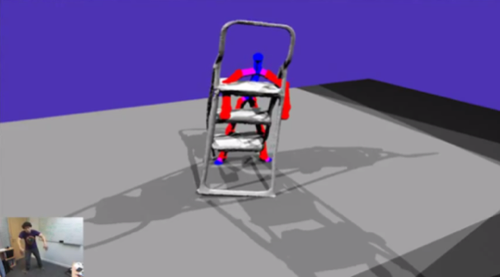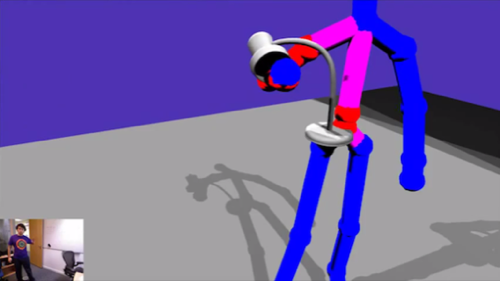
Have you ever wanted to dance a waltz as an animatronic chair? A surprisingly fun Microsoft research project released last week allows you to do just that – and lots of other aninmated tricks. Designed for computer graphics amateurs, KinÊtre taps into Microsoft’s Kinect technology to make the magic happen.
KinÊtre, a Microsoft Research project that debuted at the SIGgraph graphics show last week, uses the Kinect sensor to “map” an object, such as a chair. Holding the Kinect sensor wand, the user walks around the object, capturing images of the object at a multitude of different angles. Kinect then stitches the composite together into a 3D image. You can even scan yourself, and then try on the body of a friend!
“The idea is that we want to let you bring the world around you to life,” according to Jiawen Chen, the post-doc researcher in charge of the project. “We want to let you use Kinect for Windows and a PC and take arbitrary household objects and make them move like a cartoon character.”
The Power of Kinect
Although Kinect began life as a gaming peripheral for the Xbox, it has quickly become a platform in itself. Microsoft released Kinect for Windows last November as a way for businesses and researchers to tap into the power of the peripheral. Microsoft’s Steve Ballmer has claimed that some 200 businesses have begun working with it.
At Microsoft’s Imagine Cup, an R&D-focused contest in Australia, two-thirds of the education-focused projects utilized Microsoft Kinect in a variety of different ways, including interactive therapy for stroke victims, an automated cart to help make solo trips to crowded public places manageable for the disabled and an application to help dyslexic children learn the alphabet, Microsoft said. The company has even debuted an Accelerator program for startups developing products and businesses around Kinect.
Meanwhile, Microsoft’s own researchers continue to push the motion sensing technology ahead. Technically, Kinect can now read facial expressions and even respond to voice commands.Last year, Microsoft showed off “KinectFusion,” which essentially maps a room with Kinect as “radar,” creating a virtual space. Now, with KinÊtre, Microsoft has taken another step forward.
How KinÊtre Works

After the user scans the object, the virtual object is then combined with the image that Kinect captures of the user’s body.
When the user walks to the center of the room and says the magic word, “Possess!” Kinect then places the user’s virtual skeleton in the “costume” of the object, deforming it in real time in response to the user’s gestures or actions. (Technically, Kinect causes realistic deformations on the static input mesh it creates.) See Microsoft’s video describing the project for more (embedded above).
KinÊtre appears to “understand” a bit about the human body and the input object, too: a chair “walks” with its hind legs, while a bookcase sways itself in time to the user’s movements. A lamp hops as the user does.
Microsoft originally thought KinÊtre was headed down a different path.
“When we started this, we were thinking of using it as a more effective way of doing set dressing and prop placement in movies for a preview,” Chen said. “Studios have large collections of shapes, and it’s pretty tedious to move them into place exactly. We wanted to be able to quickly walk around and grab things and twist them around. Then we realized we can do many more fun things.”
And that’s exactly what KinÊtre looks like: fun. In fact, it would not be surprising if someone – possibly Microsoft itself – made this into a Kinect game. Consider the licensing possibilities: a home version of Fantasia, for example, or a Harry Potter-styled interactive adventure. While it’s great to see Microsoft turning Kinect into a tool for business and research, it’s nice to remember the original purpose of Kinect: games.











